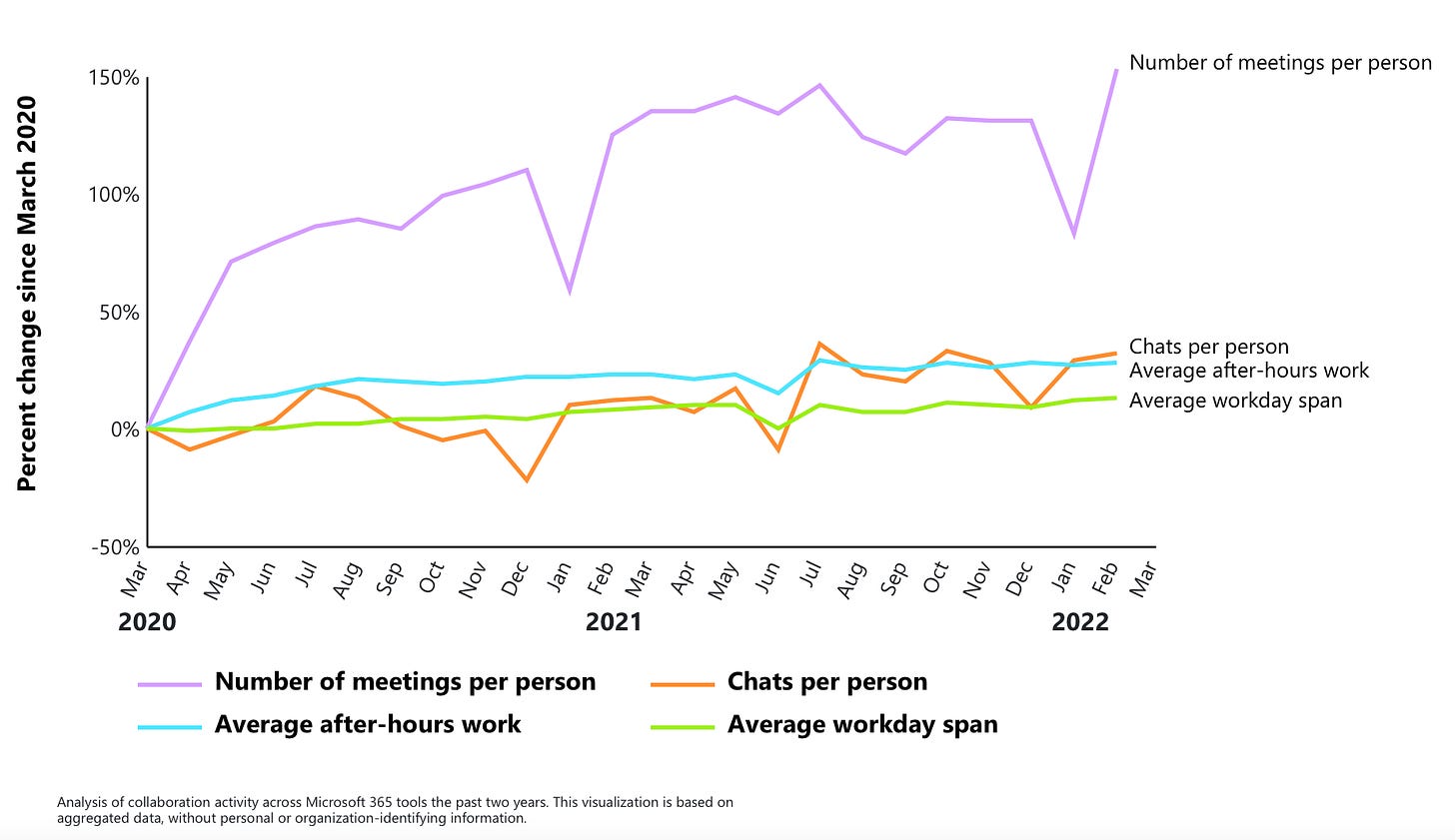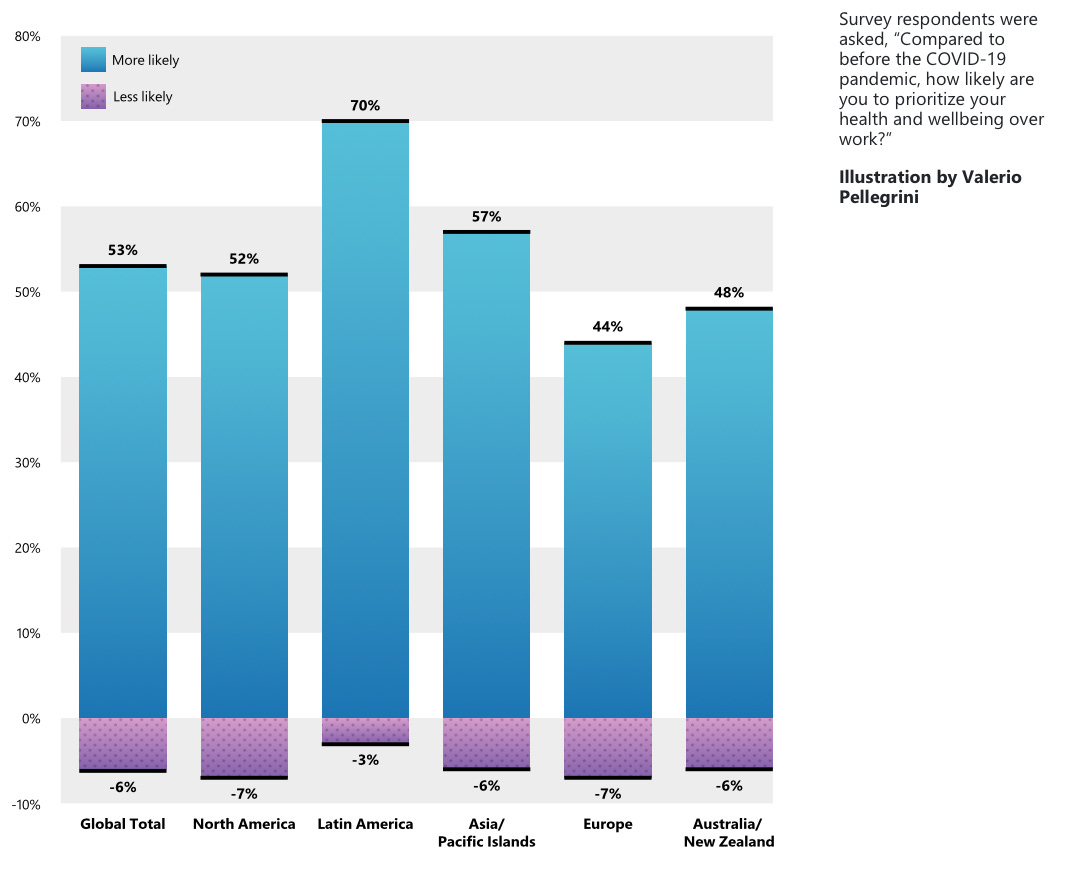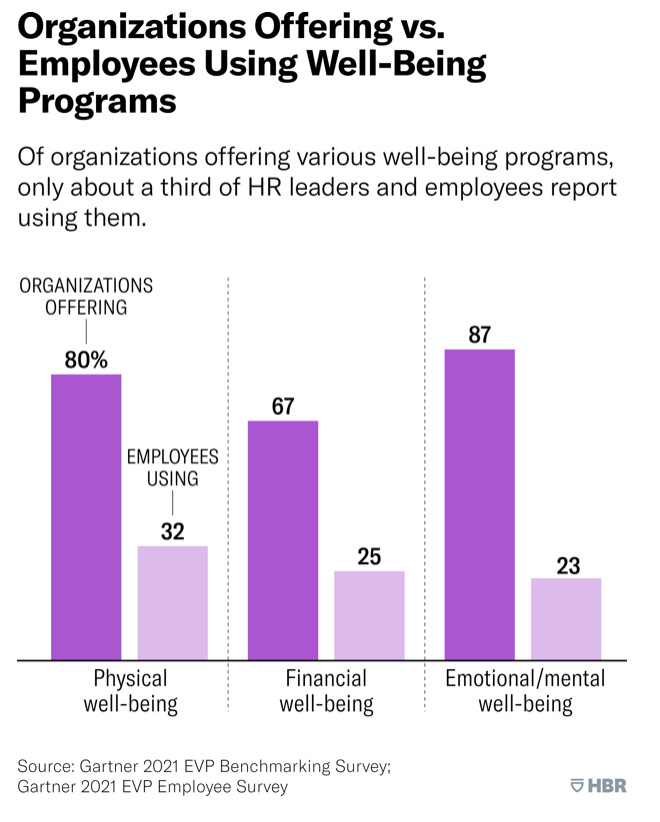HRHeadStart #44: Employee Well-being Takes Centerstage; Collecting Career Experiences; Learning @ School
The Talent Agenda
Research from Microsoft shows that the average workday expanded by about 13% between March, 2020 and February, 2022. The number of meetings per person jumped 153% and after-hours work increased by 28% during the same period.
The experience of the last few years is reshaping employees’ priorities. People’s expectations of their employers are shifting and Microsoft’s data indicates that personal well-being and work-life balance are now the top reasons why people quit. In fact, as the chart below shows, over half of the employees are more likely to prioritize their health and well-being over work.
In order to better support employees, many organizations are expanding budgets for employee well-being and adding new programs. However, research from Gartner shows low usage of well-being offerings among employees.
Organizations can take a few steps to help increase adoption of these programs and achieve the intended results. Check out this article for some interesting ways in which different organizations are approaching this problem. There are some great ideas in there like letting employees self-assess well-being to form a personal well-being plan, establish mental health volunteer support networks, team vacations etc.
Working Better
In the quest for career advancement, we can fall in the trap of focusing on collecting better job titles with each career move. While this can lead to pay enhancements in the short-term, the long-term payoffs can be maximized by focusing on collecting experiences. Experiences that expose you to different types of problems, different types of businesses, different geographies and different people - using each such move to gain higher career velocity later.
Tiny Thought
“The most important thing we ever learn at school is that the most important things can’t be learnt at school.” ~ Haruki Murakami




